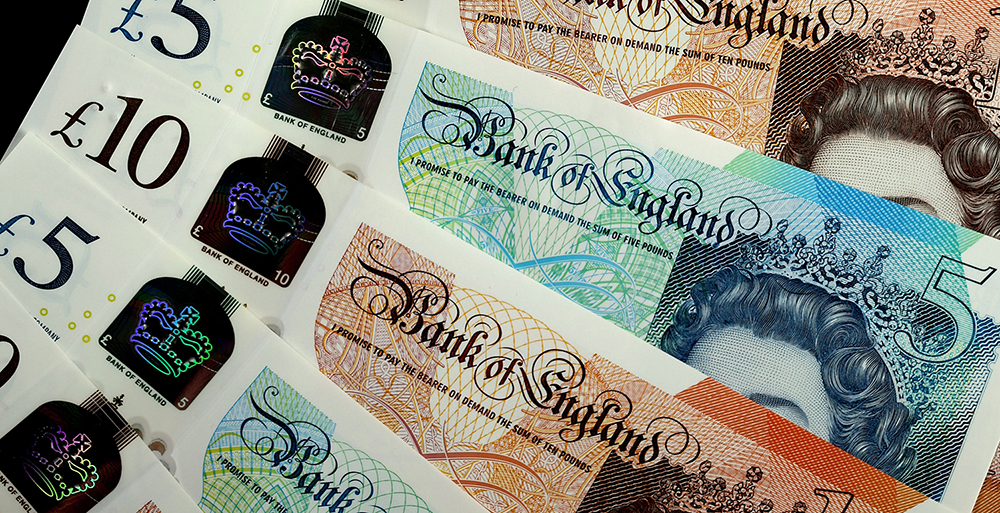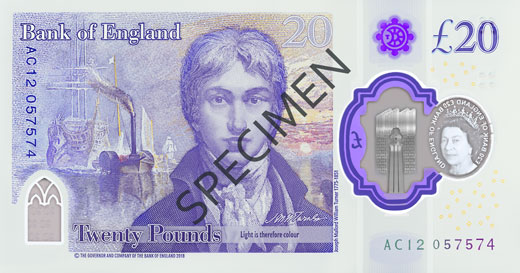Posts Tagged ‘banknotes’
The history of the ‘Ten Bob’ note – a world before the 50p coin…
Back in the 1960’s the 10 Shilling Note, or ‘ten bob’ as it was commonly known, would go pretty far – buying you 6 pints of beer, 10 loaves of bread, or 17 pints of milk.
Nowadays it’s hard to imagine the decimal equivalent, the 50p, buying so much. In fact, 50p can only just buy you one pint of milk today! And you can certainly forget that pint of beer!
But before the much loved 50p came along, the old 10 Shilling banknote had a fascinating history.
From being issued by the Government in a wartime emergency, changing colour to avoid forgery from the Nazis and eventually being replaced by the world’s most popular coin, it’s important that the history of the ten bob isn’t forgotten.
The Emergency Banknote
In August 1914, the British economy was in turmoil due to the instability caused by the oncoming war on the continent.
Bankers and politicians were desperately looking for ways to secure Britain’s finances and prevent the banks from collapsing.
The Government decided that a large supply of banknotes should be made available for the value of 10 Shillings, making it easy for the public to make small transactions.
However, The Bank of England was not able to prepare and print the required number of notes quickly enough, so the Government took the unprecedented step of deciding to issue the notes itself.

These banknotes became known as the Treasury banknotes and were unlike anything the British public had ever seen.
Until this point the lowest denomination banknote was £5, and in those days this was such a large sum that many people would never have seen or used a banknote before.
By issuing a 10 Shilling banknote, the Treasury created the first widely circulated banknotes in England.
The Wartime colour change
In 1928, the responsibility for printing 10 Shilling notes was transferred to the Bank of England.
However, not long afterwards, Britain once again found itself at war and again found its currency under threat.
During World War II, Nazi Germany hatched a plan to undermine British currency.
Through ‘Operation Bernhard’ they believed they had discovered a method to manufacture counterfeit ‘White Fivers’, and planned to distribute these in huge numbers to destabilise the British currency.
The Bank of England decided to take preventative action and, as a result, the 10 Shilling note was changed for the duration of the war to a distinctive pink and blue colour in an attempt to prevent counterfeiting.

It was also revolutionary in the progression of banknote technology by incorporating a metal security thread.
The Nazis couldn’t compete with this high level anti-forgery technology and hence the British 10 Shilling note held strong and supported the British wartime economy, as it had done since its conception.
The 50p revolution
After undergoing a colour change during the Second World War, the ten bob note reverted to its familiar red-brown until 1961, when a new design featuring a portrait of Queen Elizabeth II was introduced.
Despite a new design for the 10 Shilling note featuring Sir Walter Raleigh on the reverse being approved in 1964, as part of the process of decimalisation it was dropped in favour of the new fifty pence coin introduced in 1969.

The principle reason for the change was to save the Treasury money.
The notes had an average lifetime of around five months, whereas a coin could last for fifty years.
The 50p has since gone on to become the world’s most popular and collected coin, but nowadays few realise the fascinating history of its predecessor, the 10 Shilling banknote!
Do you remember the ten bob note? Let us know in the comments below!
If you’re interested in coin collecting, our Change Checker web app is completely free to use and allows users to:
– Find and identify the coins in their pocket
– Collect and track the coins they have
– Swap their spare coins with other Change Checkers

Sign up today at: www.changechecker.org/app
Are polymer banknotes indestructible? Millions of damaged notes forced to be replaced…
Do you remember how strange it felt to hold your first polymer £5 note when they were released back in 2016?
Billed as the most durable banknotes yet, the new polymer notes replaced the old paper versions with a thin and flexible plastic material which was said to be cleaner, safer and stronger.
And whilst it’s claimed they should last 2.5 times the lifespan of paper notes, it seems they might not be as durable as once thought…

It’s now been four years since the £5 notes were released, three years since the £10 notes were released and we’re just over a month away from the release of the new polymer £20 note.
Whilst we’re all really excited for the upcoming release of the new £20 note featuring JMW Turner, the question remains as to how durable this note will really be.
50 million damaged polymer banknotes replaced
Recent figures suggest that almost 50 million polymer £5 and £10 notes have been forced to be replaced due to the wear and tear sustained since they were released into circulation.
The Bank of England have said that the damage was mainly caused by “folds, tears, holes and foil wear”.
Figures from the Press Association news agency, say that roughly 20 million polymer £5 notes and around 26 million £10 notes have been swapped so far due to damage.
However, the Bank has never said the new notes are indestructible, instead claiming that they should last 2.5 times longer than paper notes, which were lasting an average of just two years in circulation.
The number of polymer banknotes being replaced only represents a small percentage of the total number which are circulating and the Bank suggests that this is in line with their expectations.

“While we expect the polymer notes to have a longer life, it is too early in the note’s lifecycle to yet understand the rate of replacement of polymer notes,” they said.
“The use of polymer means it can better withstand being repeatedly folded into wallets or scrunched up inside pockets, and can also survive a spin in the washing machine.”
In 2015, 21,835 paper banknotes were replaced due to damage from being torn, washed, contaminated, damaged and even chewed and eaten!
The new polymer material is resistant to dirt and moisture which means they will stay in a better condition for longer.
Plus, when a polymer note reaches the end of its life, it will be recycled, meaning the new notes are more environmentally friendly.
New polymer notes to be released
The new £20 note is due to enter circulation on 20 February 2020 and initially the note will be in circulation alongside the existing paper £20 notes.

These will eventually be phased out as we have seen with the paper £5 and £10 notes in the past years.
We are also expecting the new £50 polymer banknote featuring mathematician and second world war codebreaker Alan Turing in 2021.
Are you looking forward to seeing the new polymer notes, and have you experienced any damage to your £5 and £10 polymer notes? Let us know in the comments below!
If you’re interested in coin collecting, our Change Checker web app is completely free to use and allows users to:
– Find and identify the coins in their pocket
– Collect and track the coins they have
– Swap their spare coins with other Change Checkers

Sign up today at: www.changechecker.org/app
£1.5bn worth of old banknotes still in circulation!
It’s been more than two years since the old £5 notes were withdrawn from circulation, and yet 118 million of these notes still have not been returned.
This figure, combined with the 94 million old £10 notes left to be returned (following the withdrawal of the paper note in 2018) means that over £1.5bn worth of outdated banknotes are currently in circulation!
In fact, you might just have one in your pocket/wallet/down the back of the sofa right now!

A spokeswoman from the Bank of England said that the 224 million £5 notes returned was lower than expected, but the 697 million £10 notes returned was in line with their expectations.
It’s possible that these unreturned notes have been lost or damaged, or even held on to by collectors following the introduction of the new polymer notes.
Whilst these paper notes are no longer legal tender, they can still be exchanged at the Bank of England and there is no time limit on this.
I still remember the excitement of the first polymer £5 notes which were introduced in 2016 and whilst they definitely felt alien to begin with, I think it’s fair to say that we have all become accustomed to the polymer design and finding an old £5 or £10 note nowadays is a nostalgic experience.
In fact, many collectors were eager to get hold of some of the more unusual serial numbers for the new Winston Churchill polymer £5 and Jane Austen polymer £10 when they were first released.
And I’m certainly looking forward to seeing the polymer £20 and £50 notes which will be released in coming years.
So do you have any old banknotes lying around? There’s over £1.5bn of them out there somewhere…
If you’re interested in coin collecting, our Change Checker web app is completely free to use and allows users to:
– Find and identify the coins in their pocket
– Collect and track the coins they have
– Swap their spare coins with other Change Checkers

Sign up today at: www.changechecker.org/app




